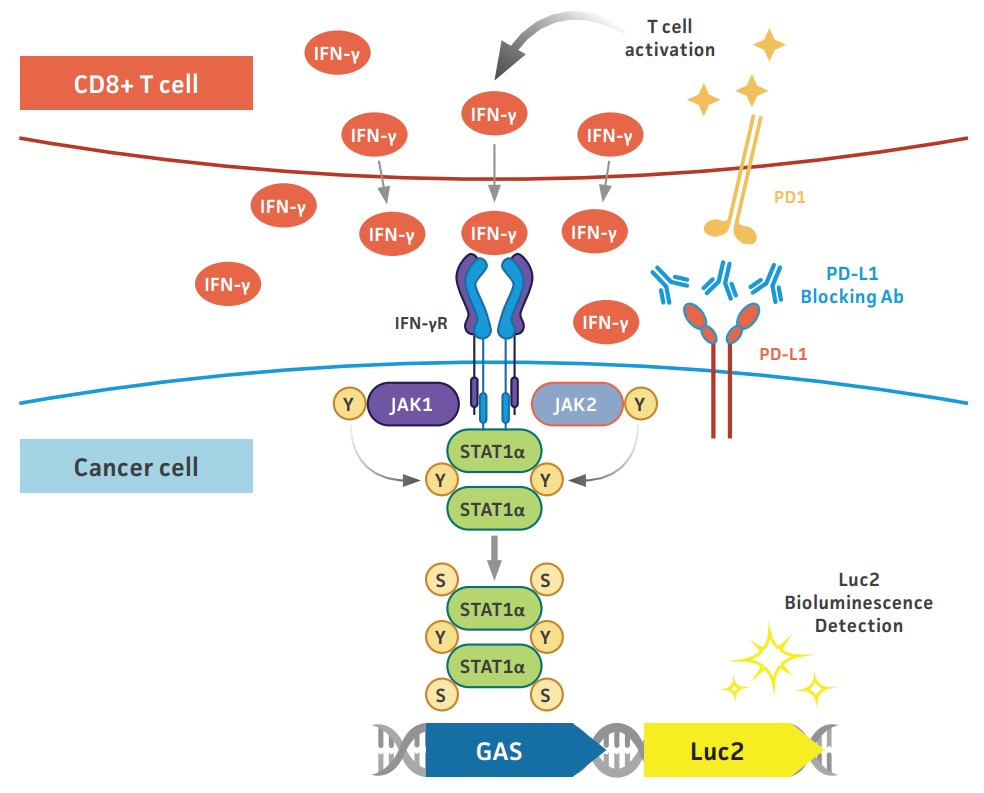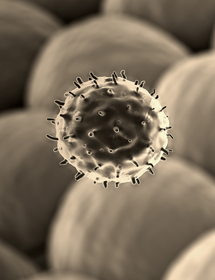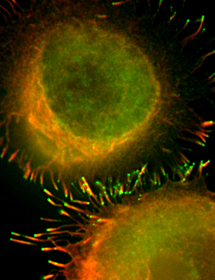
Immune checkpoint inhibitors have shown recent success in the treatment of lung, liver, breast, renal, and skin cancers; however, the lack of immunological models with endogenous expression of checkpoint marker proteins is currently a conspicuous challenge in immuno-oncology.
To facilitate large-scale drug discovery of this growing class of immunomodulator, ATCC created tumor and immune cell lines with high endogenous expression of validated targets for immune checkpoint inhibitor therapeutics. In addition, we introduced a stably-expressed luciferase reporter system that can be used to readily detect, quantitate, and evaluate the efficacy, potency, and dynamics of the inhibitor and co-stimulatory expression levels.
These novel cell lines can be incorporated into simple blocking assays or be integrated into sophisticated co-culture cell-based drug screening assays. Read our application note or watch our poster presentation to see how these the cells can provide more physiologically relevant results.
Immuno-oncology Checkpoint Luciferase Reporter Cells
| Designation | ATCC No. | Disease | Biomarker | Availability |
| HCC827-GAS-Luc2 | CRL-2868-GAS-LUC2 | Adenocarcinoma | PD-L1 | Available now |
| MG-63-GAS-Luc2 | CRL-1427-GAS-LUC2 | Osteosarcoma | CD-155 | Available now |
| NCI-H1650-GAS-Luc2 | CRL-5883-GAS-LUC2 | Adenocarcinoma | B7-H3 | Available now |
| SUP-T1 [VB]-NFAT-Luc2 | CRL-1942-NFAT-LUC2 | Lymphoblastic lymphoma | PD-1 | Available now |
| U-937 NFkB-Luc2 | CRL-1593.2-NFkB-LUC2 | Histiocytic Lymphoma | SIRPA | Available now |
| KG-1 NFkB-Luc2 | CCL-246-NFkB-LUC2 | Acute myelogenous leukemia | SIGLEC10 | Available now |
| HMC3 NFkB-Luc2 | CRL-3304-NFkB-LUC2 | Embryonic Microglia Clone 3 | PD-L1, SIRPA | Coming soon |
ATCC reporter cell lines enable sensitive and quantitative assessment of signal transduction, making them ideal for in vitro bioluminescence assays to study signaling pathways and the development of new checkpoint inhibitors for immuno-oncology drug discovery.
- Wide range of targets such as PD-L1/2, CD-155, B7-H3, and PD-1
- Luciferase will be expressed under the control of GAS or NFAT
- Exceptional in vitro and ex vivo assay sensitivity and reproducibility
- Up to five-fold luciferase induction in co-culture experiments
- Greater than 50-fold luciferase induction after IFN-gamma stimulation
- Luciferase expression stable to greater than 30 PDLs

Mechanism of action. Luciferase signal generated by HCC827-GAS-Luc2 cells upon T cell activation through the PD-L1 blockade. Created with BioRender.com.
See how these the cells can provide more physiologically relevant results
Application note
Read our application note to learn about a robust reporter system for the assessment of T cell and other immune/tumor microenvironmental cell-mediated immune responses triggered by checkpoint inhibitors.
Poster
Watch our poster presentation to learn about the development of immune checkpoint reporter cancer cell lines with high expression of endogenous immune checkpoint molecule ligands (PD-L1, CD155, and B7-H3).


